TRENDING
Amazing Wild West Hygiene Practices
Published
5 years agoon
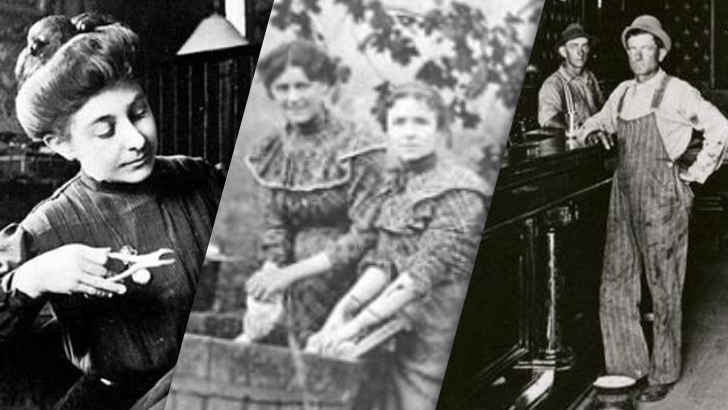
Families Would Use The Same Bath Water

Dentists Thought That Worms Caused Toothaches

People Slept In Bud-Ridden Beds

Clean Water Was Hard To Come By

Hair Care Was Primitive At Best

Things Got Messy Pre-Toilet Paper

Most Soaps Were Harmful To The Skin

Outhouses Were Worse Than You Think

Long Locks Were Quite Unsanitary

Fungal Infections Posed a Huge Problem

Saloon Towels Were Downright Filthy

Toothcare Was Virtually Non-Existent

Venereal Diseases Were Rampant

People Thought Bathing Too Often Was Unhealthy

Chewing Tobacco Was Nastier Than You Thought

Women Were More Aware Of Sun Damage Than Men

Some Women Resorted To Skin Bleaching

Dust Was Impossible To Avoid

The Chinese Would Pluck Instead Of Shave

Cowboys Often Reeked Of Horse Odor

Even a Minor Scratch Could Be Deadly

Women Set The Precedence For Hygiene

Cholera And Other Diseases Claimed Many Lives

Hospitals Were Bacteria Breeding Grounds

Bar Brawls Occasionally Led To Death

Good Hair Hygiene Eventually Became Common Practice

Backwater Physicians Used Leeches For Medical Practice

Spreading Out Meant Being Exposed To New Diseases

The Settlers’ Own Diseases Devastated Native Americans

Public Baths Became a Fad

Public Beds
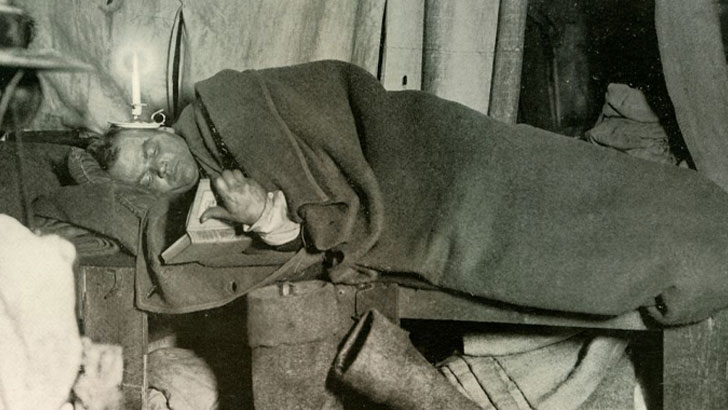 In the American Frontier, while not all beds were made from straw and hay, a significant number were and were rarely cleaned, leading to infestations of “seam squirrels” or lice, among other insects that plagued the inhabitants of the Old West. Flies and mosquitoes were ubiquitous, contaminating food and infiltrating poorly insulated structures, while the lack of screens on windows allowed all manner of insects to enter freely.
In the American Frontier, while not all beds were made from straw and hay, a significant number were and were rarely cleaned, leading to infestations of “seam squirrels” or lice, among other insects that plagued the inhabitants of the Old West. Flies and mosquitoes were ubiquitous, contaminating food and infiltrating poorly insulated structures, while the lack of screens on windows allowed all manner of insects to enter freely.
4 Types of Shampoo
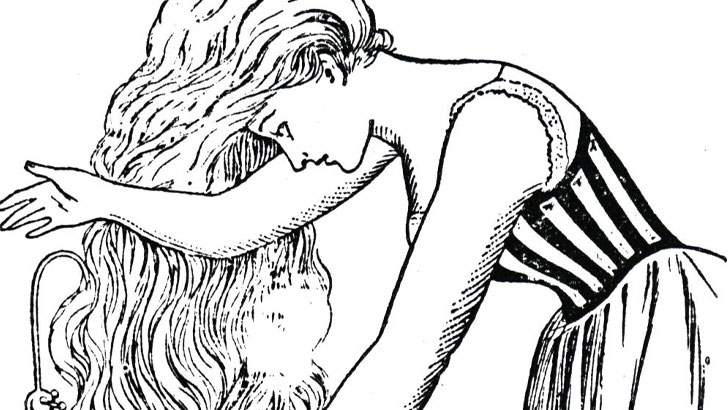 Access to soap-weed provided a means for some fortunate people to wash their hair in the past, but other methods were also utilized. Whiskey, in addition to being consumed, was employed as a multi-purpose substance that served as a disinfectant and even a shampoo. To wash their hair, individuals mixed whiskey with castor oil and then rinsed their hair with rainwater or water softened with borax. Women, on the other hand, often used heated pencils as makeshift curlers for styling their hair.
Access to soap-weed provided a means for some fortunate people to wash their hair in the past, but other methods were also utilized. Whiskey, in addition to being consumed, was employed as a multi-purpose substance that served as a disinfectant and even a shampoo. To wash their hair, individuals mixed whiskey with castor oil and then rinsed their hair with rainwater or water softened with borax. Women, on the other hand, often used heated pencils as makeshift curlers for styling their hair.
Long-Haired Men
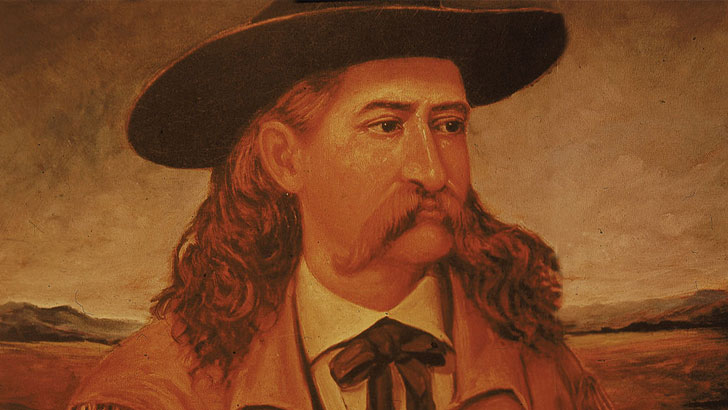 Despite the challenges of maintaining cleanliness and the potential discomfort of heat, long hair was a favored style among Wild West men, with prominent figures sporting lengthy tresses. Nevertheless, men did not simply let their hair grow unchecked, often treating themselves to a trim, bath, and new attire, including a shave, upon arriving in a new town. As the 19th century progressed, shorter hair became increasingly prevalent among men.
Despite the challenges of maintaining cleanliness and the potential discomfort of heat, long hair was a favored style among Wild West men, with prominent figures sporting lengthy tresses. Nevertheless, men did not simply let their hair grow unchecked, often treating themselves to a trim, bath, and new attire, including a shave, upon arriving in a new town. As the 19th century progressed, shorter hair became increasingly prevalent among men.
Kerchiefs Were Important
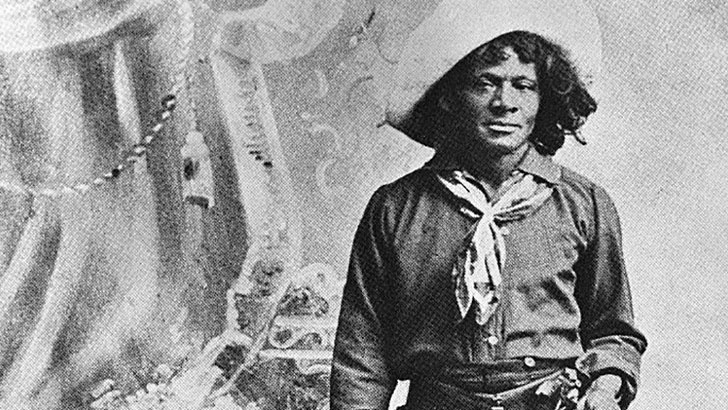 A cowboy’s outfit wouldn’t be complete without his kerchief or bandana, which served various essential functions such as shielding the mouth and nose from dust, protecting the neck from the sun, and keeping the ears warm in cold weather. While Hollywood often depicted outlaws using them to conceal their faces during robberies, these items were typically made from a range of materials and were predominantly red. To wear one, a person would fold it into a triangle and secure it around their neck with a knot.
A cowboy’s outfit wouldn’t be complete without his kerchief or bandana, which served various essential functions such as shielding the mouth and nose from dust, protecting the neck from the sun, and keeping the ears warm in cold weather. While Hollywood often depicted outlaws using them to conceal their faces during robberies, these items were typically made from a range of materials and were predominantly red. To wear one, a person would fold it into a triangle and secure it around their neck with a knot.
Drinking Alcohol Was Rough
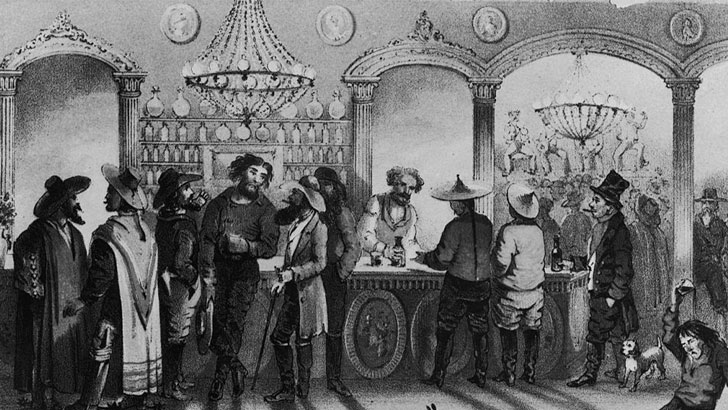 During earlier times, many saloons served an extremely potent alcoholic beverage made from burnt sugar, alcohol, and chewing tobacco, known as “firewater,” which cowboys would sometimes ignite to prove its high alcohol content. Another well-liked drink was cactus wine, a blend of tequila and peyote tea. The alcoholic drinks of that era were far more robust than those of today, and there was no shortage of individuals imbibing them, which often resulted in numerous bar fights and fatalities.
During earlier times, many saloons served an extremely potent alcoholic beverage made from burnt sugar, alcohol, and chewing tobacco, known as “firewater,” which cowboys would sometimes ignite to prove its high alcohol content. Another well-liked drink was cactus wine, a blend of tequila and peyote tea. The alcoholic drinks of that era were far more robust than those of today, and there was no shortage of individuals imbibing them, which often resulted in numerous bar fights and fatalities.
Spitting Was A Health Hazard
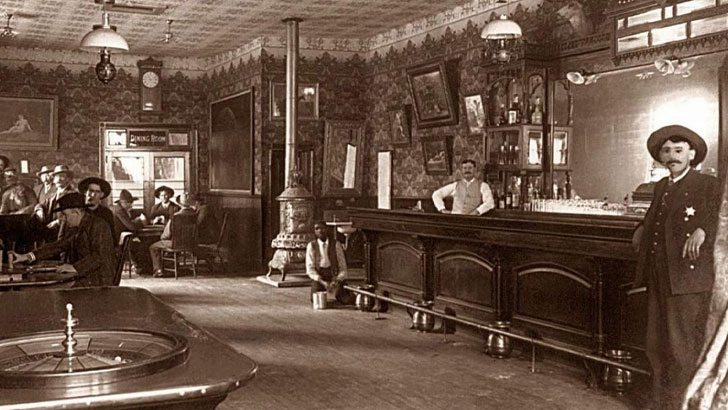 In the Old West, it was common for men to chew and spit tobacco, and many would spit directly on the floor of saloons where spittoons lined the bar, as depicted in the image. The saliva on the floor and in the spittoons was then mixed with sawdust, which created a hazardous environment due to the increased risk of respiratory diseases like tuberculosis and pneumonia. As many travelers rented out space in saloons to sleep on the floor, the spit-ridden sawdust became a breeding ground for germs. As a result, some places imposed a complete ban on spitting, and those who violated this rule were subjected to a fine or imprisonment.
In the Old West, it was common for men to chew and spit tobacco, and many would spit directly on the floor of saloons where spittoons lined the bar, as depicted in the image. The saliva on the floor and in the spittoons was then mixed with sawdust, which created a hazardous environment due to the increased risk of respiratory diseases like tuberculosis and pneumonia. As many travelers rented out space in saloons to sleep on the floor, the spit-ridden sawdust became a breeding ground for germs. As a result, some places imposed a complete ban on spitting, and those who violated this rule were subjected to a fine or imprisonment.
Sleeping Bags
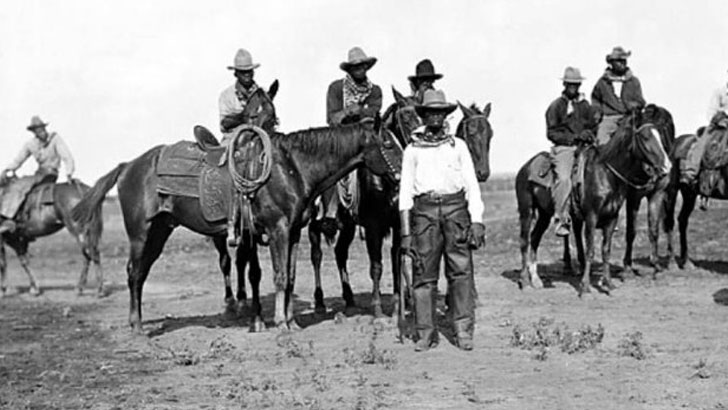 Despite the common misconception, cowboys did not sleep directly on the ground while out on the trail. Instead, they used a bedroll that was akin to a modern-day sleeping bag. The bedroll was constructed from waxed and waterproofed canvas material and could be easily carried by the cowboy, rolled up and strapped to his back while riding on horseback.
Despite the common misconception, cowboys did not sleep directly on the ground while out on the trail. Instead, they used a bedroll that was akin to a modern-day sleeping bag. The bedroll was constructed from waxed and waterproofed canvas material and could be easily carried by the cowboy, rolled up and strapped to his back while riding on horseback.
Beer Towels
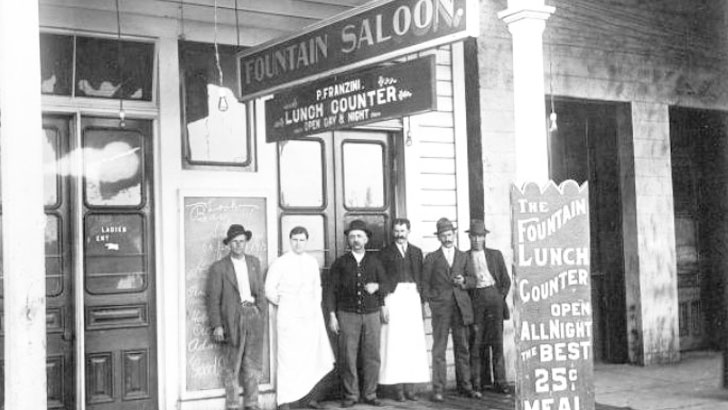 Cowboys often share a common interest in addition to horseback riding: drinking beer. When indulging in this beverage, they would often use a beer towel to wipe away any foam left on their faces.
Cowboys often share a common interest in addition to horseback riding: drinking beer. When indulging in this beverage, they would often use a beer towel to wipe away any foam left on their faces.
Bonnets
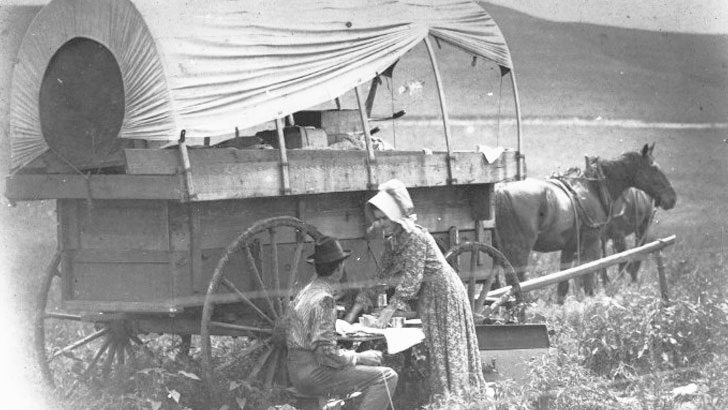 In contrast to the men, women in the Old West took a different approach to maintaining their hygiene. They protected their skin from the sun’s damaging effects by wearing bonnets, which helped keep their complexion clear and white. The women recognized the importance of sun protection and thus wore bonnets almost everywhere they went, even when spending extended periods outdoors.
In contrast to the men, women in the Old West took a different approach to maintaining their hygiene. They protected their skin from the sun’s damaging effects by wearing bonnets, which helped keep their complexion clear and white. The women recognized the importance of sun protection and thus wore bonnets almost everywhere they went, even when spending extended periods outdoors.
Washing Clothes
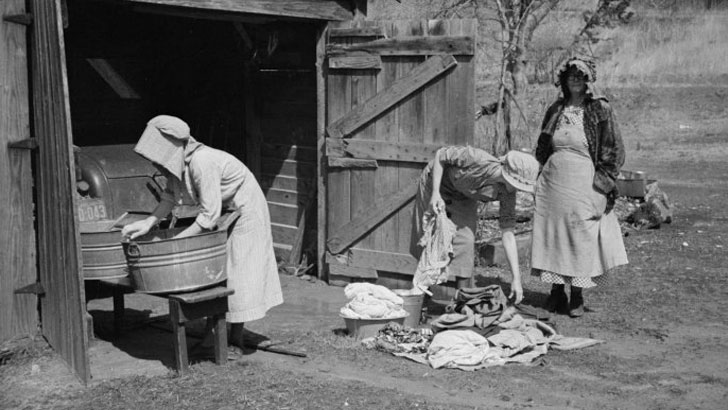 Life on the pioneer trail was far from hygienic, but pioneers found ways to keep their clothes clean. They used salt, scrubbing boards, and even blue dye to maintain their clothing’s cleanliness. Interestingly, the use of blue dye eventually led to the creation of blue jeans, which became a popular clothing item among pioneers and eventually grew to become an iconic fashion item globally.
Life on the pioneer trail was far from hygienic, but pioneers found ways to keep their clothes clean. They used salt, scrubbing boards, and even blue dye to maintain their clothing’s cleanliness. Interestingly, the use of blue dye eventually led to the creation of blue jeans, which became a popular clothing item among pioneers and eventually grew to become an iconic fashion item globally.
Prostitution
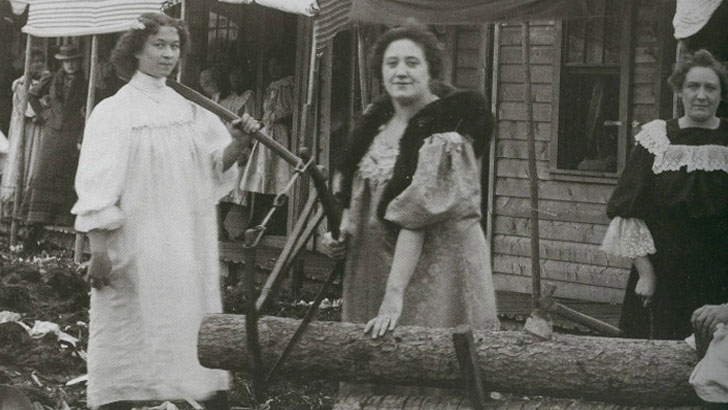 During the Old West era, brothels were a common feature in towns and cities, and surprisingly, the brothel madam played a significant role in empowering women. These women not only provided sexual services but also acted as confidants and advisors to the male clientele. Many of these madams were business-savvy and owned their own brothels, giving them a level of financial independence not typically available to women at the time. They were known to support their employees and provide them with opportunities for education and advancement, which helped to promote the idea of women’s empowerment in society.
During the Old West era, brothels were a common feature in towns and cities, and surprisingly, the brothel madam played a significant role in empowering women. These women not only provided sexual services but also acted as confidants and advisors to the male clientele. Many of these madams were business-savvy and owned their own brothels, giving them a level of financial independence not typically available to women at the time. They were known to support their employees and provide them with opportunities for education and advancement, which helped to promote the idea of women’s empowerment in society.
Brothels
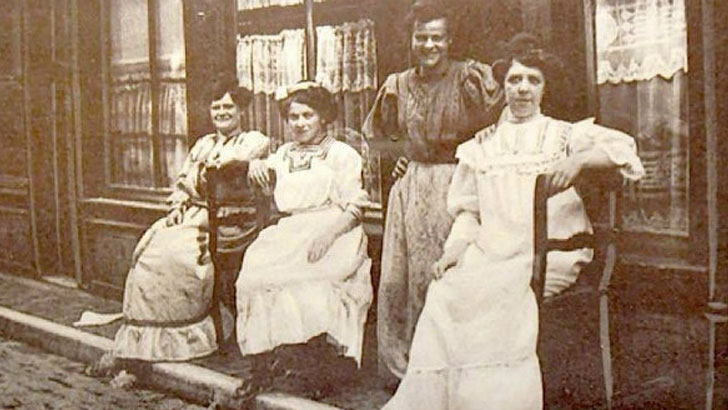 In the Wild West, sexually transmitted diseases were rampant, spreading quickly and easily. Brothels were a particularly risky environment, with up to 90% of the women infected with syphilis or gonorrhea, which they transmitted to their clients. The only treatment available at the time was Mercury cream, which was far from safe.
In the Wild West, sexually transmitted diseases were rampant, spreading quickly and easily. Brothels were a particularly risky environment, with up to 90% of the women infected with syphilis or gonorrhea, which they transmitted to their clients. The only treatment available at the time was Mercury cream, which was far from safe.
Period Hygiene
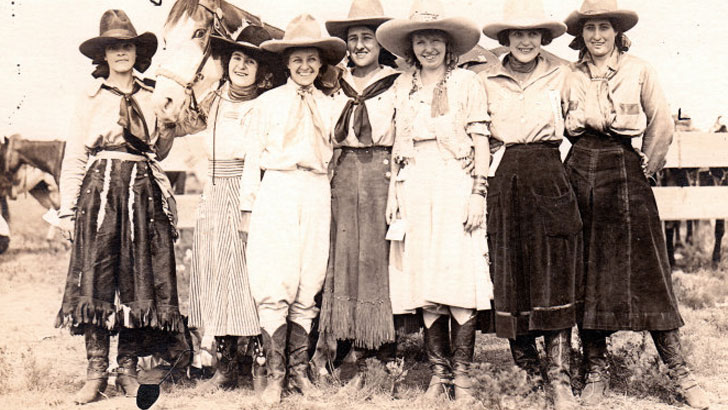 Women on the trail had a solution for their menstrual cycle, thanks to Lister’s belt, the first disposable napkin introduced in 1896. Before this innovation, women had to make do with whatever materials were available, including paper found on the trail. The introduction of Lister’s belt made it much easier for women to manage their periods and maintain personal hygiene. It’s amazing to think about the resourcefulness and resilience of women during this time.
Women on the trail had a solution for their menstrual cycle, thanks to Lister’s belt, the first disposable napkin introduced in 1896. Before this innovation, women had to make do with whatever materials were available, including paper found on the trail. The introduction of Lister’s belt made it much easier for women to manage their periods and maintain personal hygiene. It’s amazing to think about the resourcefulness and resilience of women during this time.
Calomel Danger
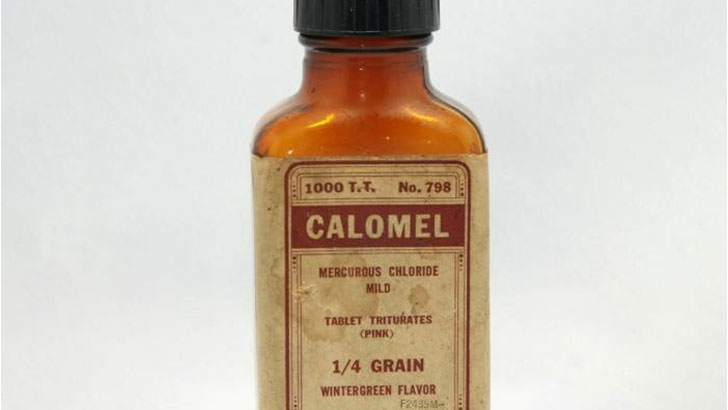 In the Wild West, there were frequent health-related issues, requiring medicine to be made quickly. One such medication was Calomel, which was made from mercurous chloride and was used to cleanse the body. Unfortunately, it often had the opposite effect, either causing a person’s teeth to soften or poisoning them with mercury. Either way, it was a risky treatment that many would have avoided if they had known the side effects.
In the Wild West, there were frequent health-related issues, requiring medicine to be made quickly. One such medication was Calomel, which was made from mercurous chloride and was used to cleanse the body. Unfortunately, it often had the opposite effect, either causing a person’s teeth to soften or poisoning them with mercury. Either way, it was a risky treatment that many would have avoided if they had known the side effects.
Rise of Deodorant
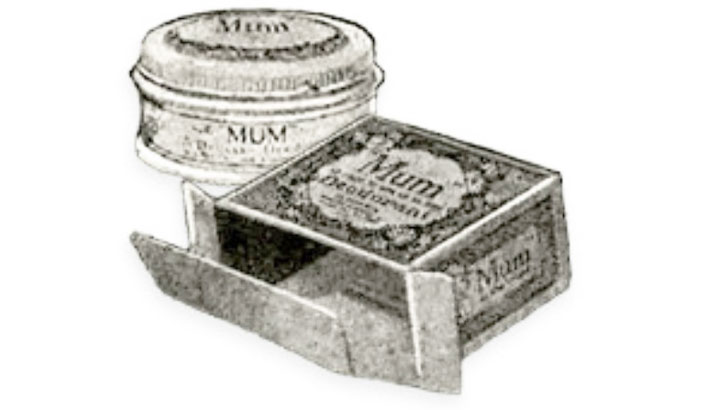 Surprisingly, deodorant has been available for Westerners for quite some time. The first company to create deodorant was Mum in 1888, using a thick paste. However, it wasn’t widely used by many people.
Surprisingly, deodorant has been available for Westerners for quite some time. The first company to create deodorant was Mum in 1888, using a thick paste. However, it wasn’t widely used by many people.
Medicine Cocktails
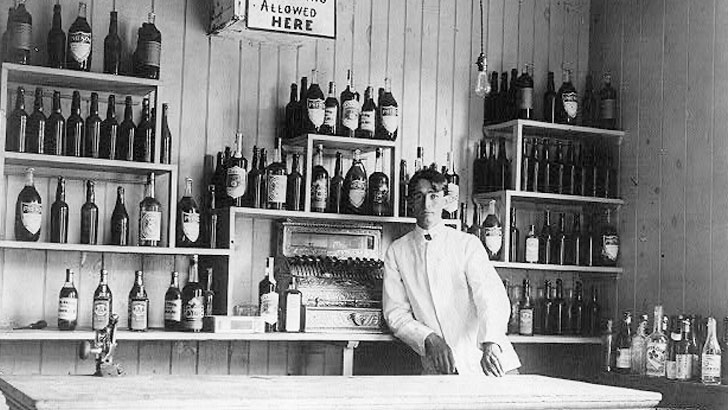 Despite the 19th century being relatively recent, the lack of advanced medicine at the time caused many issues. As a result, people had to rely on homemade remedies and cocktails to treat illnesses. Brandy was a popular liquor used for medicinal purposes, serving as both a sedative and a treatment for various conditions.
Despite the 19th century being relatively recent, the lack of advanced medicine at the time caused many issues. As a result, people had to rely on homemade remedies and cocktails to treat illnesses. Brandy was a popular liquor used for medicinal purposes, serving as both a sedative and a treatment for various conditions.
Mental & Emotional Health
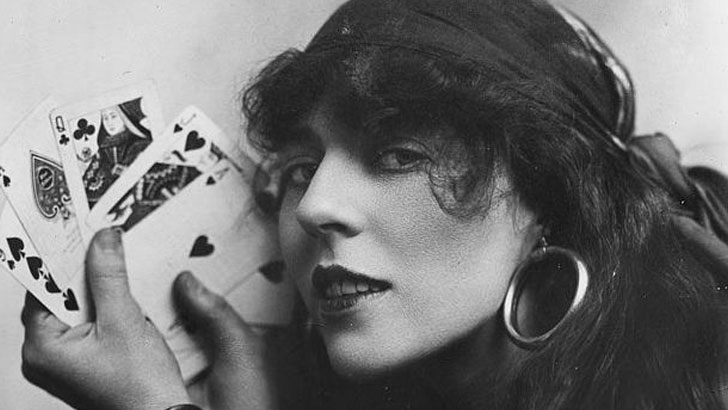 Surprisingly, cowboys and pioneers had a fascination with fortune-telling and superstitions, and they employed various methods, such as crystal ball gazing and tarot card readings. Even the Romani Gypsies, who migrated from Europe, brought their fortune-telling practices to the Old West.
Surprisingly, cowboys and pioneers had a fascination with fortune-telling and superstitions, and they employed various methods, such as crystal ball gazing and tarot card readings. Even the Romani Gypsies, who migrated from Europe, brought their fortune-telling practices to the Old West.
Hot Springs
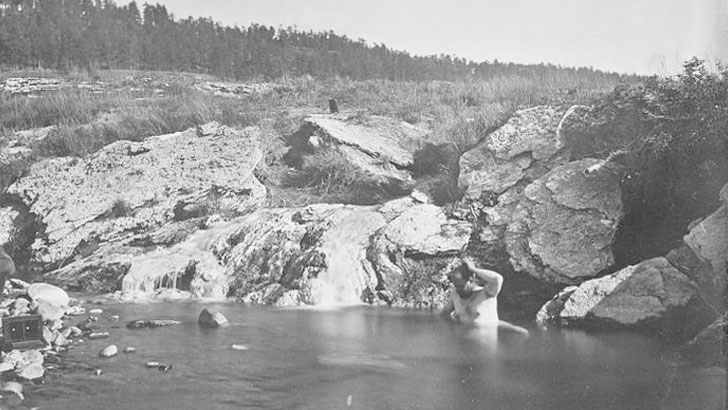 Despite the scarcity of clean water, American westerners still prioritized cleanliness and hygiene for comfort and health reasons. As a result, over time, bathing habits developed and improved with new techniques and products for maintaining personal hygiene.
Despite the scarcity of clean water, American westerners still prioritized cleanliness and hygiene for comfort and health reasons. As a result, over time, bathing habits developed and improved with new techniques and products for maintaining personal hygiene.
Cultural Backgrounds
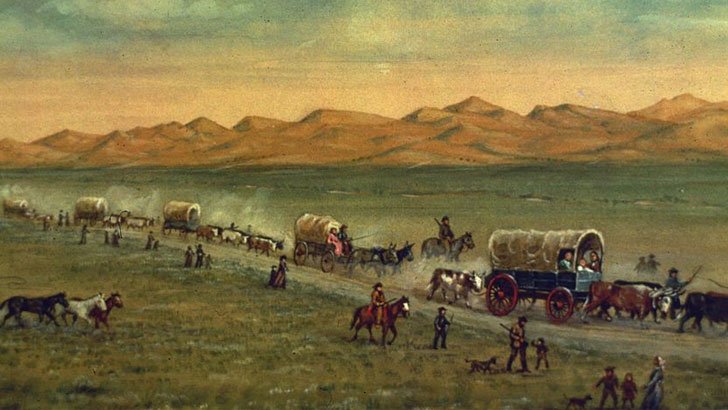 During a dig site excavation in Deadwood, South Dakota, a team of archaeologists discovered a pair of tweezers in 2005. It is believed that the tweezers were frequently used by the Chinese population that resided in Deadwood, who plucked their facial hair instead of shaving. Although the tweezers were also reportedly used for smoking opium, it is speculated that the ones found were primarily intended for feminine hygiene purposes in the Old West.
During a dig site excavation in Deadwood, South Dakota, a team of archaeologists discovered a pair of tweezers in 2005. It is believed that the tweezers were frequently used by the Chinese population that resided in Deadwood, who plucked their facial hair instead of shaving. Although the tweezers were also reportedly used for smoking opium, it is speculated that the ones found were primarily intended for feminine hygiene purposes in the Old West.
Women’s Complexions
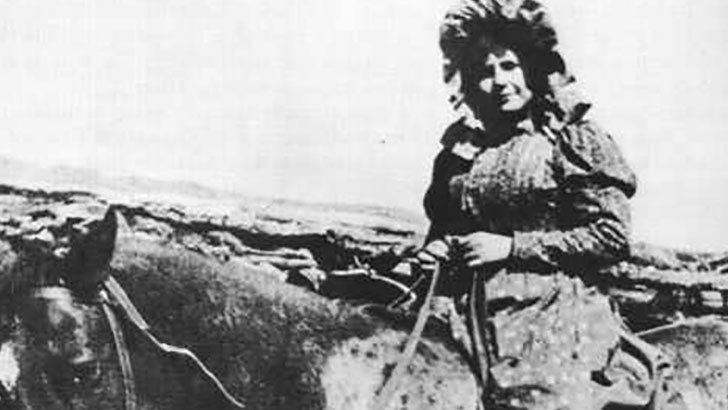 During the 19th century, many middle and upper-class women aimed to keep their skin as clear and white as possible. This was achieved by either bleaching their skin or avoiding the sun as much as possible. Whenever they went outside, they wore bonnets, gloves, and long sleeves to shield themselves from the sun. However, not all pioneer women had access to such luxuries and were exposed to the sun regardless. Some women even went against social norms and lived more like cowboys, disregarding the expectations of traditional femininity.
During the 19th century, many middle and upper-class women aimed to keep their skin as clear and white as possible. This was achieved by either bleaching their skin or avoiding the sun as much as possible. Whenever they went outside, they wore bonnets, gloves, and long sleeves to shield themselves from the sun. However, not all pioneer women had access to such luxuries and were exposed to the sun regardless. Some women even went against social norms and lived more like cowboys, disregarding the expectations of traditional femininity.
More From Auto Overload
-


‘80s Fitness Stars In Their Prime Vs. Where They Are…
-
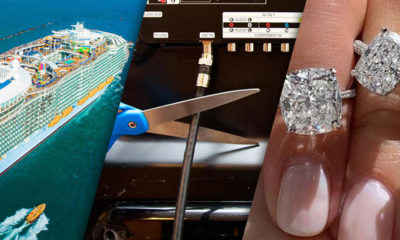

Millennial Buying Trends That Are Ruining These Once Popular Industries
-


Rare Photos of the Royal Family
-


Celebs Who Are Actually Related
-


Amazing Wives And Girlfriends of MLB Stars
-


Top Secret Places That Are Restricted
-


Vintage Photos From Woodstock Festival
-
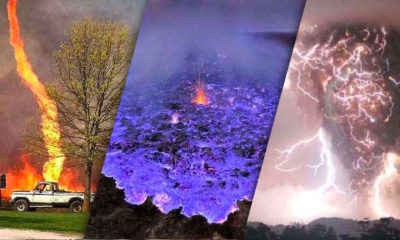

Natural Phenomenons You Won’t Believe
-
Can You Name These Famous Bands?
-
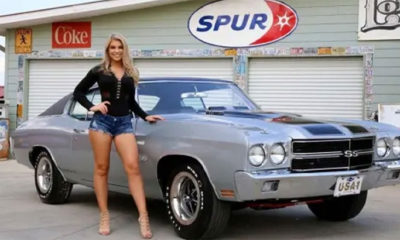

What Are These Car Parts Called?
-


25 Facts About Air Force One
-
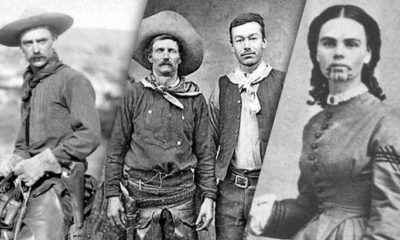

Wild West Photos From A Forgotten Past
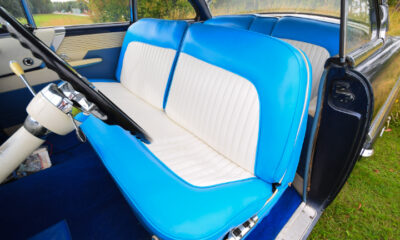

6 Popular Car Features That Will Never Be Seen Again
Venturing into the market for a new car after some time can be overwhelming, given the rapid advancements in vehicle...
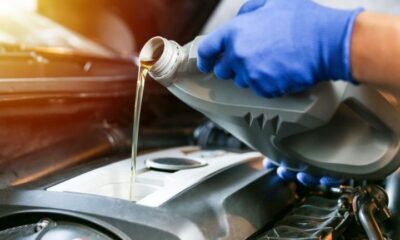

6 Best High Mileage Motor Oils On The Market
As vehicles age and accumulate miles, the demand for high-mileage motor oils grows significantly. These specialized lubricants are formulated to...


8 Easy Ways To Increase Your Car’s Value
If you’ve been contemplating selling or trading in your car, there are simple yet effective ways to enhance its value...


10 Common Car Problems Every Driver Should Be Aware Of
While many of us rely on our cars for daily transportation, we often do so without fully understanding the subtle...

